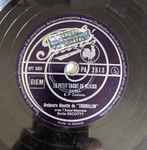Tourbillon
In horology, a tourbillon (/tʊərˈbɪljən/; French: [tuʁbijɔ̃] "whirlwind") is an addition to the mechanics of a watch escapement. Developed around 1795 and patented by the French-Swiss watchmaker Abraham-Louis Breguet on June 26, 1801, a tourbillon aims to counter the effects of gravity by mounting the escapement and balance wheel in a rotating cage, to negate the effect of gravity when the timepiece (thus the escapement) is stuck in a certain position. By continuously rotating the entire balance wheel/escapement assembly at a slow rate (typically about one revolution per minute), positional errors are averaged out.
Originally an attempt to improve accuracy, tourbillons are still included in some expensive modern watches as a novelty and demonstration of watchmaking virtuosity. The mechanism is usually exposed on the watch's face to show it off.
Releases

Images - Coming soon...
Tracklist: Pièces De Viole, Livre II, 1738, Suites I - IV
| No. | Title | Runtime |
|---|---|---|
| Pièces De Viole, Livre II, 1738, Suites I - IV | ||
| Suite III | 18:38 | |
| Suite I | 19:28 | |
| Suite II | 19:28 | |
| Suite IV | 17:34 |






























